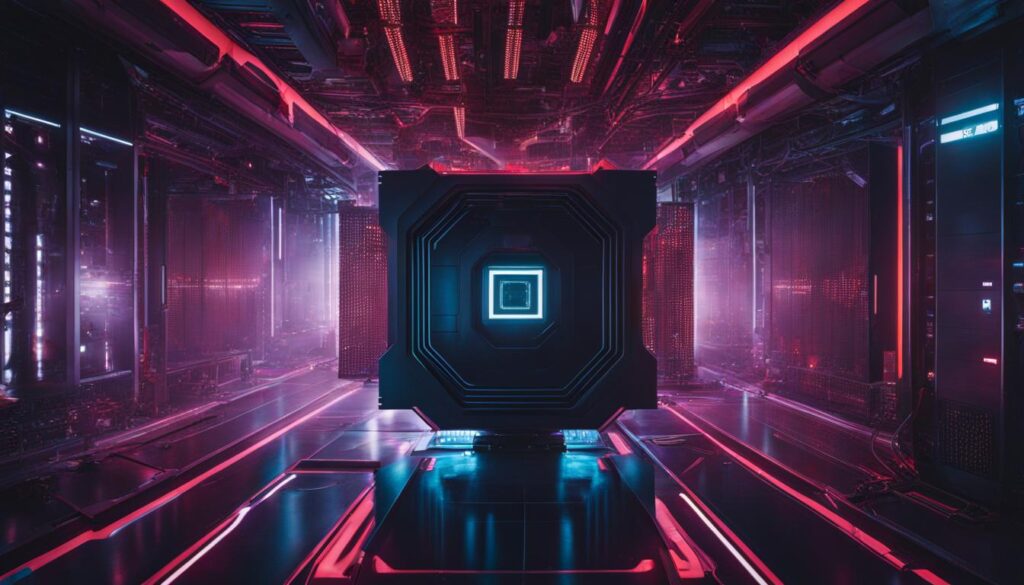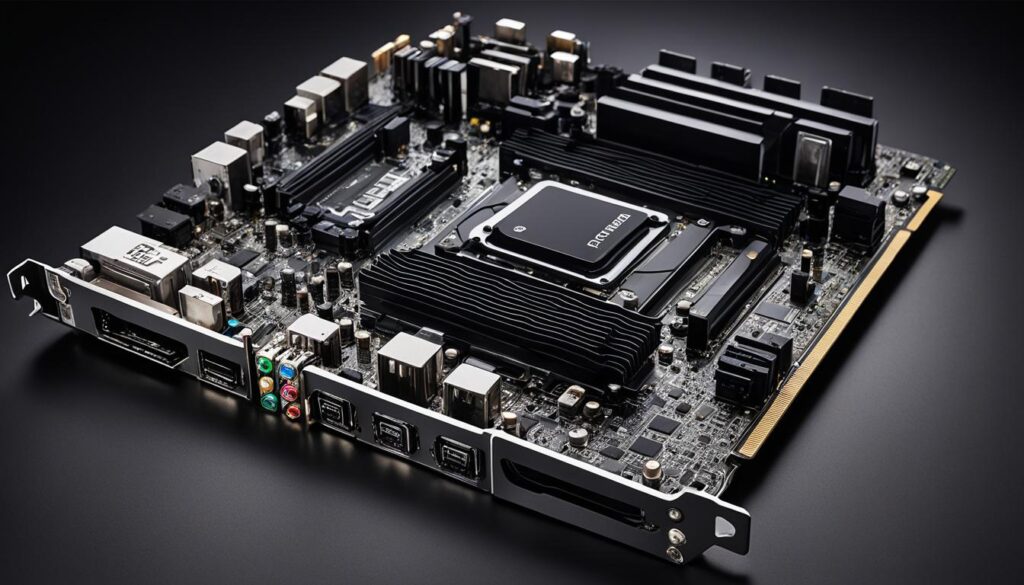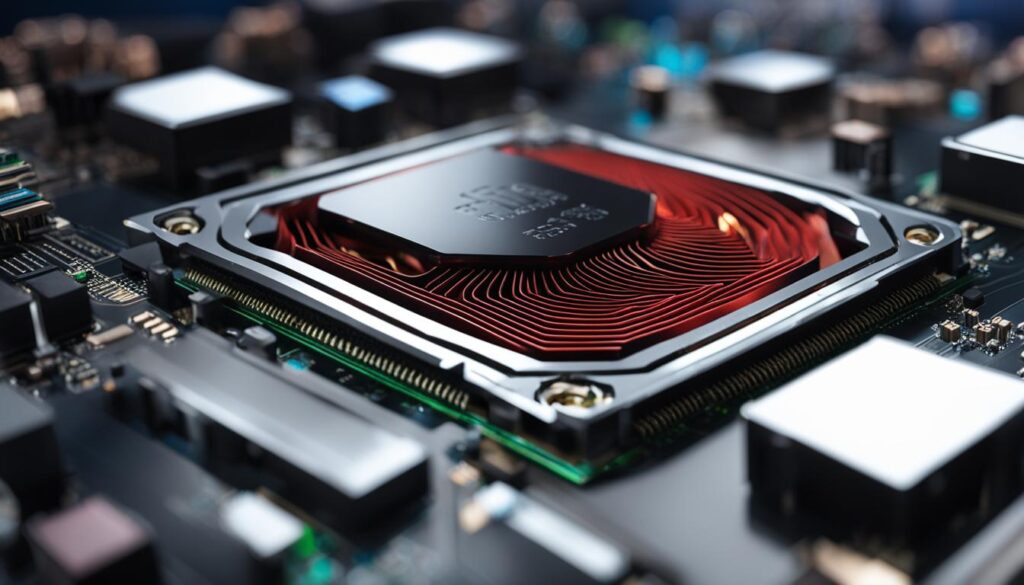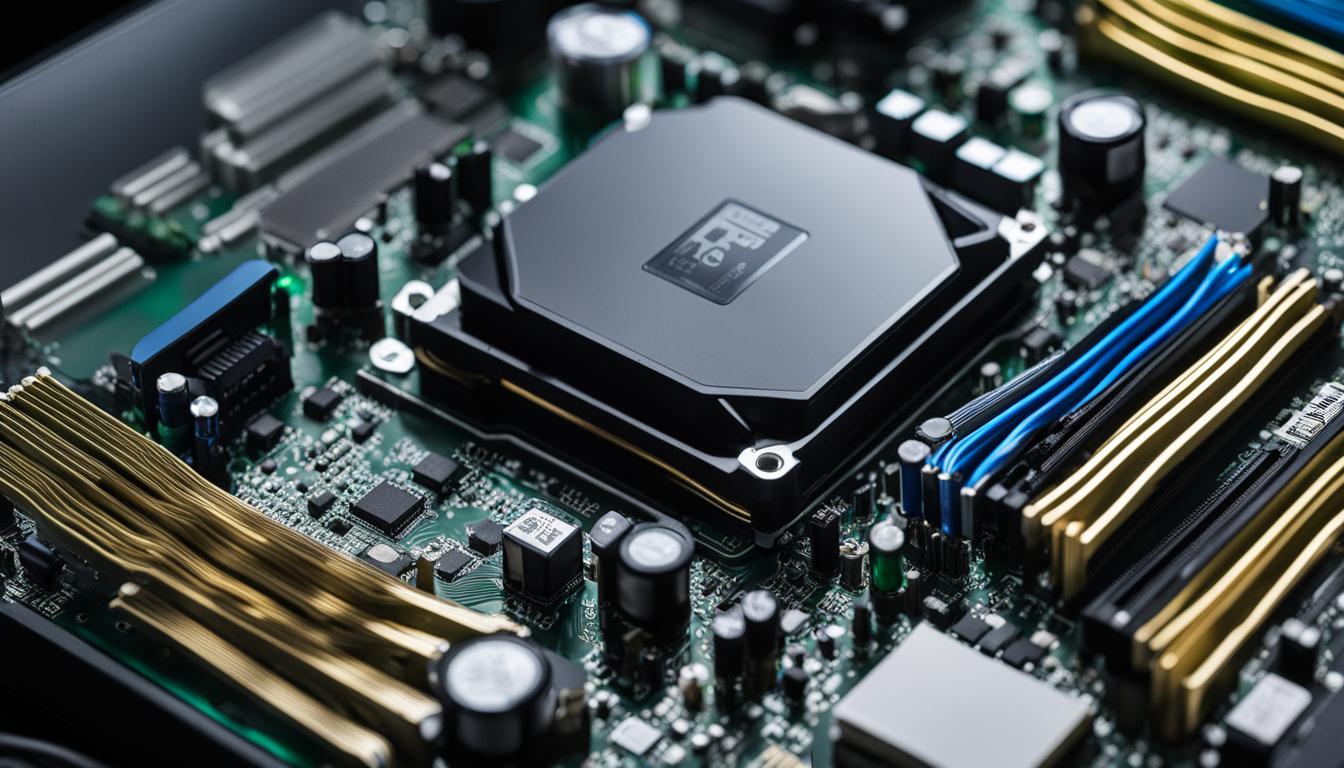A graphics processing unit (GPU) is a specialized electronic circuit designed to accelerate computer graphics and image processing. However, GPUs have expanded beyond their initial purpose and are now used for non-graphical calculations, such as training neural networks and cryptocurrency mining. GPUs play a vital role in information technology, both in terms of graphics processing and other computational tasks.
Contents
- 1 The History of GPUs
- 2 How GPUs Work
- 3 GPU Use Cases
- 4 Integrated vs. Discrete GPUs
- 5 Cloud GPUs
- 6 Conclusion
- 7 FAQ
- 7.1 Is a GPU considered part of Information Technology?
- 7.2 What is the history of GPUs in Information Technology?
- 7.3 How do GPUs work in Information Technology?
- 7.4 What are the use cases of GPUs in Information Technology?
- 7.5 What is the difference between integrated and discrete GPUs in Information Technology?
- 7.6 What are cloud GPUs and their role in Information Technology?
- 7.7 What is the difference between GPUs and CPUs in Information Technology?
- 7.8 How important are GPUs in Information Technology?
- 8 Source Links
Key Takeaways:
- GPUs are a crucial component of information technology, responsible for accelerating graphics processing and performing other computationally intensive tasks.
- They have evolved from specialized graphics circuits to become integral parts of various industries.
- GPUs work through parallel processing and have their own RAM.
- They have applications in gaming, video editing, artificial intelligence, and cryptocurrency mining.
- There are integrated and discrete GPUs, each serving different purposes in information technology.
The History of GPUs
Graphics Processing Units (GPUs) have a rich history and have significantly impacted the field of Information Technology (IT). Since their early development in the 1970s, GPUs have undergone remarkable transformations, evolving from specialized graphics circuits to powerful processors that play a vital role in numerous IT applications.
Initially, GPUs were primarily used in arcade game systems and early home computers. These early GPUs focused on enhancing graphical performance to deliver immersive gaming experiences and improve visual displays. As technology advanced, GPUs became more sophisticated, leading to the development of integrated circuits and specialized graphics processors specifically designed for personal computers.
Today, GPUs have become an integral part of the IT industry, with their influence extending far beyond graphics processing. While their roots lie in delivering exceptional visual experiences, GPUs now also contribute to a wide range of computational tasks, such as machine learning, data analysis, and cryptocurrency mining.
By embracing parallel processing, GPUs excel at handling numerous calculations simultaneously, making them exceptionally well-suited for graphics-intensive applications. The parallel processing capabilities of GPUs significantly accelerate rendering processes, enabling the generation of high-quality, realistic graphics in real-time. This attribute makes GPUs indispensable in various industries, including gaming, virtual reality, and cinematography.
Furthermore, GPUs have recently emerged as an essential component in artificial intelligence (AI) and machine learning. Their ability to rapidly process vast amounts of data and execute complex algorithms makes them indispensable for training deep neural networks and running AI-related applications. GPUs have proven instrumental in accelerating breakthroughs in computer vision, natural language processing, and autonomous vehicles.
With their seamless integration into the IT landscape, GPUs have revolutionized the way we interact with digital content. Whether it’s immersive gaming experiences, stunning graphics, or cutting-edge AI applications, GPUs have become indispensable tools in pushing the boundaries of what is possible in information technology.
To better understand the importance of GPUs in IT, let’s delve into their inner workings in the next section.
How GPUs Work
Graphics Processing Units, or GPUs, play a critical role in the field of Information Technology (IT). They excel at parallel processing, where multiple processors handle separate parts of a task simultaneously. This unique capability makes them incredibly powerful and efficient in various IT applications, such as gaming, video editing, and AI.
When it comes to graphics rendering, GPUs have their own dedicated RAM to store data and execute instructions from the CPU. This allows them to swiftly process large amounts of information, resulting in fast and smooth rendering of high-resolution images and videos. Whether you’re playing the latest visually stunning video game or editing professional-quality videos, the importance of GPUs in delivering an immersive and visually captivating experience cannot be overstated.
Moreover, GPUs are not limited to graphics processing alone. Their parallel processing capabilities make them well-suited for computationally intensive tasks like artificial intelligence. GPUs can handle complex calculations involved in training neural networks, enabling breakthroughs in fields such as image recognition, natural language processing, and deep learning.
Parallel Processing: A Game-Changer
The true power of GPUs lies in their ability to perform parallel processing. Unlike Central Processing Units (CPUs) that excel at sequential processing, GPUs consist of numerous cores that work together simultaneously on different aspects of a task. This parallelism allows GPUs to tackle highly demanding computations and significantly accelerate the processing time.
“The parallel processing capabilities of GPUs make them indispensable in the world of information technology. From delivering jaw-dropping visuals to revolutionizing AI research, GPUs have become an integral part of modern computing.”
By harnessing the power of parallel processing, GPUs have effectively become a key component of the IT industry. Their presence extends far beyond gaming and graphics, making them an indispensable resource for anyone working with computationally intensive applications.

The Versatility of GPUs in IT
Here are just a few examples of how GPUs are utilized in different IT domains:
- Graphics-intensive Applications: GPUs accelerate real-time rendering for gaming, 3D modeling, virtual reality, and computer-aided design (CAD) software.
- Video Editing: GPUs provide the necessary processing power to handle the complex calculations involved in editing and rendering high-resolution videos.
- AI and Machine Learning: GPUs excel at training large-scale neural networks, facilitating advancements in fields like image recognition, natural language processing, and deep learning.
As technology continues to advance, the importance of GPUs in the IT industry will only grow. Their parallel processing capabilities, combined with their ability to deliver exceptional graphical performance, make them an essential component in enabling the next generation of innovative applications and technologies.
GPU Use Cases
Graphics Processing Units (GPUs) have a significant impact on the field of Information Technology (IT) and find wide-ranging applications in various industries. Let’s explore some of the key use cases where GPUs play a crucial role.
Accelerating Real-Time Graphics Applications
One of the primary applications of GPUs in IT is accelerating the rendering of real-time graphics applications. Whether you’re playing a visually stunning video game or designing complex 3D models, GPUs ensure smooth and immersive user experiences by rapidly processing and displaying high-resolution graphics.
Enhancing Video Editing
Video editing is a resource-intensive task that requires processing large amounts of visual data. GPUs excel in this area by providing real-time video playback, seamless editing, and efficient rendering of high-quality videos. They enable faster editing workflows, allowing professionals to achieve their creative vision efficiently.
Powering Video Game Graphics
The gaming industry heavily relies on GPUs for generating realistic and immersive visual experiences. GPUs handle the complex calculations involved in rendering lifelike graphics, enabling gamers to enjoy stunning visuals and high frame rates. From detailed character models to realistic lighting effects, GPUs elevate the gaming experience to new heights.
Aiding Artificial Intelligence (AI) Tasks
AI applications, such as image recognition, deep learning, and data analysis, benefit greatly from the parallel processing capabilities of GPUs. These powerful processors can swiftly handle the complex calculations involved in training neural networks and analyzing vast amounts of data. GPUs empower AI algorithms to achieve faster results and push the boundaries of machine learning.
Facilitating Cryptocurrency Mining
In recent years, GPUs have gained popularity in the realm of cryptocurrency mining. The ability of GPUs to perform high-speed parallel calculations makes them well-suited for solving complex cryptographic puzzles to mine cryptocurrencies like Bitcoin and Ethereum. Miners utilize the immense processing power of GPUs to increase their chances of successfully mining new blocks.
| GPU Use Case | Industry/Application |
|---|---|
| Accelerating Real-Time Graphics Applications | Gaming, Virtual Reality, Animation |
| Enhancing Video Editing | Film Production, Video Editing Studios |
| Powering Video Game Graphics | Gaming Industry |
| Aiding Artificial Intelligence (AI) Tasks | Machine Learning, Data Analysis |
| Facilitating Cryptocurrency Mining | Cryptocurrency Industry |
As technology continues to advance, the importance of GPUs in IT will only grow. Their ability to handle intensive graphics processing and parallel computations makes them indispensable in fields such as gaming, media production, AI research, and cryptocurrency mining.
Integrated vs. Discrete GPUs
When it comes to graphics processing units (GPUs), there are two main types: integrated and discrete. Understanding the differences between these two types can help you make informed decisions about your information technology (IT) needs.
Integrated GPUs are built into the motherboard or CPU of a device. They are commonly found in laptops and smaller devices, providing energy-efficient graphics processing. Integrated GPUs are designed to handle basic graphics tasks and are suitable for everyday computing needs. However, they may lack the processing power required for resource-intensive applications like gaming or 3D rendering.
Discrete GPUs, on the other hand, are separate graphics cards or chips that connect to the motherboard of a device. They offer more processing power and are specifically designed for high-performance tasks. Discrete GPUs excel in resource-intensive applications such as gaming, video editing, and 3D rendering, providing smooth and immersive graphics experiences.
Both integrated and discrete GPUs have their advantages and play a crucial role in information technology. Integrated GPUs are efficient and cost-effective, making them suitable for everyday computing needs. Discrete GPUs, on the other hand, deliver exceptional performance and are essential for demanding applications that require high-quality graphics output.
The Advantages of Integrated GPUs:
- Energy-efficient graphics processing
- Cost-effective for everyday computing needs
- Integrated into the device, reducing the need for additional hardware
The Advantages of Discrete GPUs:
- High-performance graphics processing
- Ideal for gaming, video editing, and 3D rendering
- Provides smooth and immersive graphics experiences
Overall, the choice between an integrated or discrete GPU depends on your specific IT requirements. If you primarily use your device for everyday computing tasks, an integrated GPU may be sufficient. However, if you engage in resource-intensive activities such as gaming or video editing, a discrete GPU is highly recommended to ensure optimal performance and graphics quality.

Cloud GPUs
In recent years, the role of GPUs in information technology has expanded even further with the emergence of cloud GPUs. Cloud GPUs, also known as virtual GPUs or virtualized GPU services, provide a convenient and scalable solution for companies that require heavy computing power or need to work with machine learning or 3D visualizations.
With cloud GPUs, businesses can access the power of GPUs through the cloud, eliminating the need for expensive hardware investments. These virtual GPUs offer several benefits for the IT industry:
- Cost savings: By utilizing cloud GPUs, companies can save on hardware costs, maintenance, and upgrades. They can scale their GPU resources based on their actual usage, paying only for what they need.
- Scalability: Cloud GPUs provide the flexibility to quickly scale up or down based on the demands of the business. This scalability allows companies to handle peak workloads efficiently without worrying about hardware limitations.
- Flexibility: With cloud GPUs, businesses can access their GPU resources from anywhere with an internet connection. This flexibility enables remote work, collaboration, and accessibility across different locations.
Moreover, cloud GPUs can be easily integrated with other cloud services, such as storage and compute resources, creating a comprehensive IT infrastructure that meets the evolving needs of modern businesses.

In conclusion, both GPUs and CPUs have their unique roles and contribute to different aspects of information technology. While GPUs excel in graphics processing and computationally intensive tasks, CPUs handle general computing and system management. Their combined efforts drive the advancement of technology in various sectors. The GPU’s significant impact on graphics processing and its integration into diverse industries make it an integral part of information technology.
Conclusion
In today’s technology-driven world, GPUs have proven to be an indispensable component of information technology. With their ability to accelerate graphics processing and handle computationally intensive tasks, GPUs have become instrumental in various industries.
From the early days of specialized graphics circuits to the development of integrated and discrete GPUs, these powerful processors have evolved alongside the growth of the IT industry. Whether it’s gaming, video editing, or artificial intelligence, GPUs play a vital role in delivering high-quality graphics and enabling complex calculations.
As technology continues to advance, GPUs will undoubtedly continue to shape the future of information technology. Their parallel processing capabilities and increasing efficiency make them invaluable for handling the ever-increasing demand for realistic visuals and data-intensive applications.
So, the next time you enjoy a visually stunning video game, edit a high-definition video, or witness the power of AI, remember that GPUs are at the heart of it all, driving innovation and pushing the boundaries of what information technology can achieve.
FAQ
Is a GPU considered part of Information Technology?
Yes, a graphics processing unit (GPU) is a vital component in information technology. It is used to accelerate computer graphics and image processing, as well as perform other computational tasks like training neural networks and cryptocurrency mining.
What is the history of GPUs in Information Technology?
GPUs have been used in specialized graphics circuits since the 1970s, initially in arcade game systems and home computers. Over the years, GPU technology has evolved, leading to the development of integrated circuits and specialized graphics processors for personal computers. Today, GPUs are integral to the IT industry, with applications ranging from gaming to artificial intelligence.
How do GPUs work in Information Technology?
GPUs work through parallel processing, where multiple processors handle different parts of a task. They have their own RAM to store data and execute instructions from the CPU for graphics rendering. The parallel processing capabilities of GPUs enable fast and smooth rendering of high-resolution images and videos, making them essential for various IT applications, including gaming, video editing, and AI.
What are the use cases of GPUs in Information Technology?
GPUs have a wide range of applications in information technology. They are commonly used for accelerating the rendering of real-time graphics applications, video editing, and video game graphics. Additionally, GPUs are increasingly used for AI-related tasks, such as image recognition, deep learning neural networks, and data analysis. GPUs have also been utilized for cryptocurrency mining due to their ability to perform high-speed parallel calculations.
What is the difference between integrated and discrete GPUs in Information Technology?
There are two types of GPUs: integrated and discrete. Integrated GPUs are built into a device’s motherboard or CPU and are commonly found in laptops and smaller devices, providing energy-efficient graphics processing. Discrete GPUs, on the other hand, are separate chips or graphics cards and offer more processing power. They are commonly used in resource-intensive applications like gaming and 3D rendering.
What are cloud GPUs and their role in Information Technology?
Cloud GPUs are virtualized GPU services or virtual GPUs that can be accessed through the cloud. They are suitable for companies that require heavy computing power or need to work with machine learning or 3D visualizations. Cloud GPUs offer benefits such as cost savings, scalability, and flexibility, making them a valuable resource in the IT industry.
What is the difference between GPUs and CPUs in Information Technology?
While both GPUs and CPUs are essential components in information technology, they serve different purposes. CPUs are responsible for processing basic commands and tasks, while GPUs specialize in graphics rendering and other computationally intensive applications. GPUs have parallel processing capabilities with a larger number of cores, making them more efficient for graphics-related tasks. CPUs have a higher clock speed and are better suited for general computing tasks.
How important are GPUs in Information Technology?
GPUs are integral to information technology, playing a crucial role in graphics processing, artificial intelligence, and other computationally intensive tasks. They have a long history of evolution and have become essential components in various industries, including gaming, video editing, and machine learning. As technology continues to advance, GPUs will continue to contribute to the advancement of information technology.




